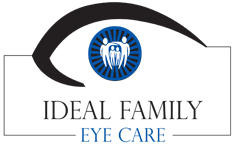What to expect
Before and After:
On the first day of your procedure you should arrive at the office as rested and relaxed as possible. Don’t wear make-up for your initial fitting. It may interfere with the cleanliness of the procedure. Expect this visit to last approximately one hour.
The new retainer lenses will be placed on your eyes. You will have an adaptation period of 10 to 20 minutes. During this time, you will feel a slight awareness of the lens on the lid. You will be instructed in the proper method of lens insertion and removal and the hygiene associated with the lenses. You will be given all the solution and instructions necessary to handle this at home.

We will train you until you have demonstrated proficiency with insertion, removal, and centering of your lenses. We will then discuss your lens-wearing schedule with you. To ensure the best possible results, it is essential that the wearing schedule be followed closely.
During night wear, the eyelid covers the lens. This results in very little lens movement. You likely will have very little feeling of the lenses the first night. The lenses are highly oxygen-permeable, so the cornea will not be deprived of oxygen even when the lenses are worn while sleeping. After the initial session of contact fitting, you will be scheduled for an appointment next day wearing retainer lenses This is a very important visit since the cornea and resulting vision are rapidly improving at this stage.
A follow-up exam will include an exam while wearing the lens, which includes an evaluation of the lens fit and visual acuity, and an exam with the lens removed. This includes measuring unaided visual acuity, corneal curvature measurements with keratometry, and corneal topography. The objective and subjective refraction determines your new vision correction, and biomicroscopy evaluates the health of the eye. A refitting of new accelerated contact lenses as necessary or possible contact lens modifications may take place.
Follow-up appointments are usually scheduled for two-weeks, one-month, three months and six-months, but can vary depending on your unique requirements. Retainer lens exams will be performed every year. Retainer lens wearing will range from every night to wearing the lenses only few times per week but that would be determined by your doctor .
What does corneal reshaping involve?
A computerized map of your corneal topography is obtained to designed your Gentle Shaping Molds . When you pick up your molds, you will be trained on how to use and care for them. The maintenance is very easy. The next morning, you come back to the office wearing your molds. We will review aspects of their care again and check your vision.
Most of the clarity changes occur rapidly over the first few days. If any change in the design of the Gentle Shaping Molds is needed we will reorder new ones for you (at no charge). For most patients, your first set of Gentle Shaping Molds is your final set for the year. Even after you are seeing well we will continue to monitor your eyes to ensure your cornea is adapting well to the molds. Most patients are done with their follow up care in three months, but due to factors like original prescription and corneal flexibility the speed of corneal reshaping varies from patient to patient. When treatment is complete, the Gentle Shaping Molds are worn nightly to maintain daytime clarity.

What are the disadvantages of corneal reshaping?
Patients must allow for 4 – 6 office visits during the first 12 months of the program. Also, if you stop wearing your Gentle Shaping Molds, your vision will slowly return to its original state. While the success of GSS is very high, it cannot be guaranteed and 20/20 vision might not be obtained . Although it is rare that a good candidate does not do well with reshaping lenses , the rate and degree of change may vary from one person to the next.
What does the gentle shaping system program include?
Your Gentle Shaping System program includes all testing required to safely achieve your goals. This includes corneal topography, determination of current prescriptive needs, Gentle Shaping Mold design, insertion, removal, and care instruction, all professional visits, and one final set of Complimentary Gentle Shaping Molds to achieve optimal vision during the time specified in your program. Once again, for most patients, your first set of Gentle Shaping Molds is your final set for the year. Program fees are determined by patient prescription and shape of ones cornea . Fees varies from $ 2,200 to $ 3,600 depending on complexity of prescription.
